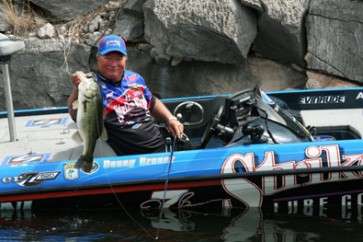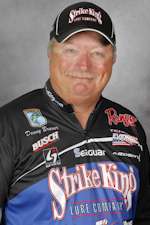
The calendar might say spring, but in many parts of the country it's still mighty cold in the lakes and rivers. Still, the days are getting longer and things are warming up so the bass are starting to move shallow.
My fishing changes at this time of year. In the winter, I'm thinking vertical structure and cover. At this time of the year, I'm thinking horizontal. The bass will start to move shallower and are often found on flats with scattered clumps of vegetation on them or smaller patches of dense wood, leaves and whatever else has washed into the water over the winter.
Coves, cuts and other protected areas are often productive. Flooded brush and willow trees are frequently good in the early spring just before the bass are actually on the beds. You're looking for areas that the fish are moving into rather than areas they are moving out of. You want to be in front of them, not behind them.
I like to flip and pitch those small spots of cover until I'm able to develop a pattern. Bass are frequently selective in the early spring. If you find one or two on the deeper side of a clump of vegetation in the sun, it's likely that they'll all be in similar places around the lake. Make sure you pay careful attention to how you were working your bait when you get bit, too. That can make a big difference.
When you get them dialed-in you can really slay them. Some of the best days I've ever had flipping and pitching have come at this time of the year.
I don't change my baits until the fish are actually on the beds. I use the same ones I've been fishing with in late winter. That's a Strike King 1/2-ounce Denny Brauer Premiere Pro-Model Jig in green pumpkin brown or green pumpkin craw. Every now and then, especially if the water's heavily stained, I'll go with black and blue.
If the cover's really nasty and heavy — think Florida or Texas — I'll switch to something a little heavier like a Texas rigged Strike King Perfect Plastic Rodent or Baby Rodent weighted with a Strike King 1-ounce sinker.
I always use Seaguar fluorocarbon line. I never cheat on my line quality. It's foolish to take a chance on losing a big fish because of poor line.
One final note: This is a tough time of the year to talk about. We're faced with a lot of variables. In Florida, most of the bass have already spawned. Up north, most of the bass are still under the ice. Those in between are, well, somewhere in between.
You have to analyze your local water to determine where the bass are and how to best catch them. That's a state by state and lake by lake process. If I knew a shortcut to get that done, I'd tell you. I don't. All I can say to you is to spend time on the water.
Originally published March 2011





